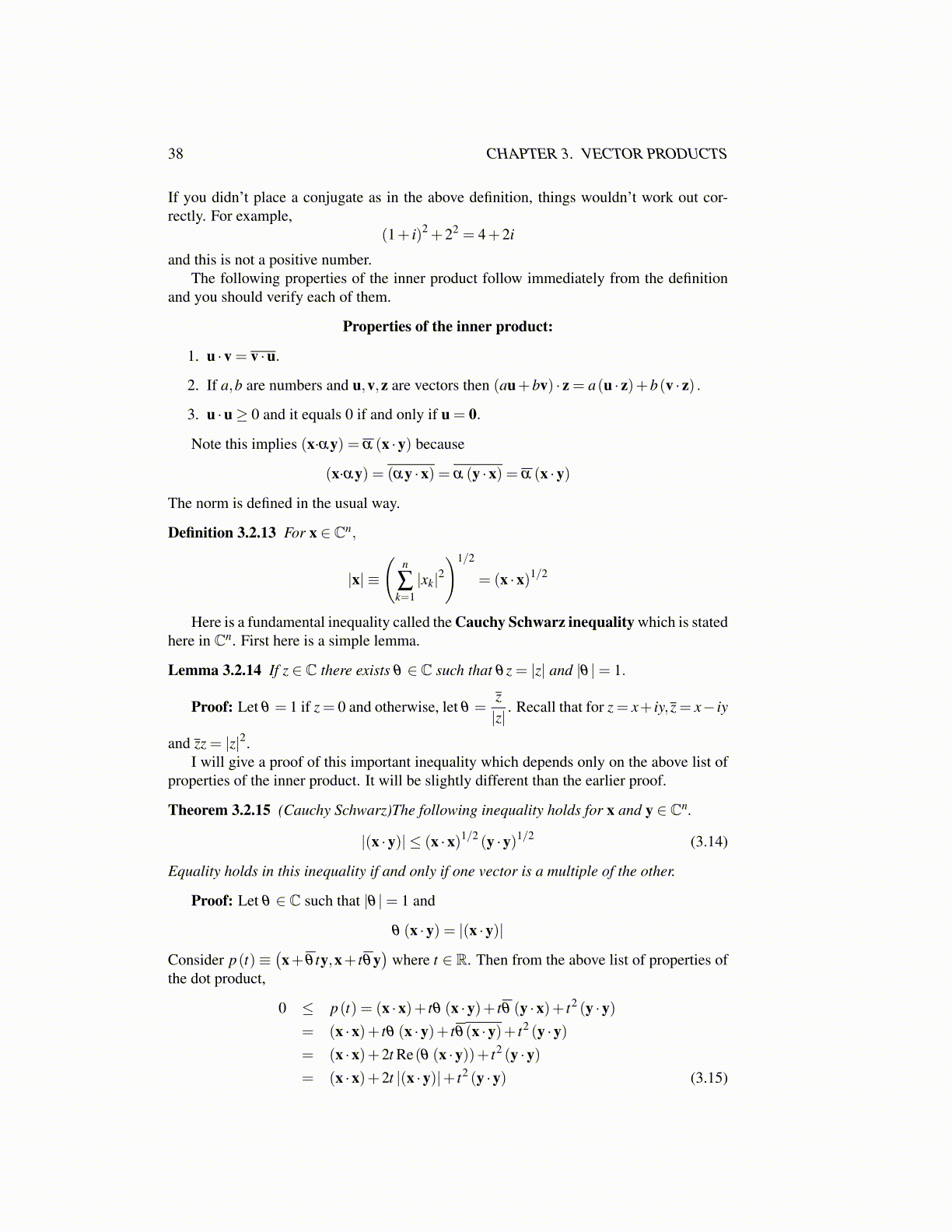
38 CHAPTER 3. VECTOR PRODUCTS
If you didn’t place a conjugate as in the above definition, things wouldn’t work out cor-rectly. For example,
(1+ i)2 +22 = 4+2i
and this is not a positive number.The following properties of the inner product follow immediately from the definition
and you should verify each of them.
Properties of the inner product:
1. u ·v = v ·u.
2. If a,b are numbers and u,v,z are vectors then (au+bv) · z = a(u · z)+b(v · z) .
3. u ·u≥ 0 and it equals 0 if and only if u = 0.
Note this implies (x·αy) = α (x ·y) because
(x·αy) = (αy ·x) = α (y ·x) = α (x ·y)
The norm is defined in the usual way.
Definition 3.2.13 For x ∈ Cn,
|x| ≡
(n
∑k=1|xk|2
)1/2
= (x ·x)1/2
Here is a fundamental inequality called the Cauchy Schwarz inequality which is statedhere in Cn. First here is a simple lemma.
Lemma 3.2.14 If z ∈ C there exists θ ∈ C such that θz = |z| and |θ |= 1.
Proof: Let θ = 1 if z = 0 and otherwise, let θ =z|z|
. Recall that for z = x+ iy,z = x− iy
and zz = |z|2.I will give a proof of this important inequality which depends only on the above list of
properties of the inner product. It will be slightly different than the earlier proof.
Theorem 3.2.15 (Cauchy Schwarz)The following inequality holds for x and y ∈ Cn.
|(x ·y)| ≤ (x ·x)1/2 (y ·y)1/2 (3.14)
Equality holds in this inequality if and only if one vector is a multiple of the other.
Proof: Let θ ∈ C such that |θ |= 1 and
θ (x ·y) = |(x ·y)|
Consider p(t)≡(x+θ ty,x+ tθy
)where t ∈ R. Then from the above list of properties of
the dot product,
0 ≤ p(t) = (x ·x)+ tθ (x ·y)+ tθ (y ·x)+ t2 (y ·y)= (x ·x)+ tθ (x ·y)+ tθ(x ·y)+ t2 (y ·y)= (x ·x)+2t Re(θ (x ·y))+ t2 (y ·y)= (x ·x)+2t |(x ·y)|+ t2 (y ·y) (3.15)